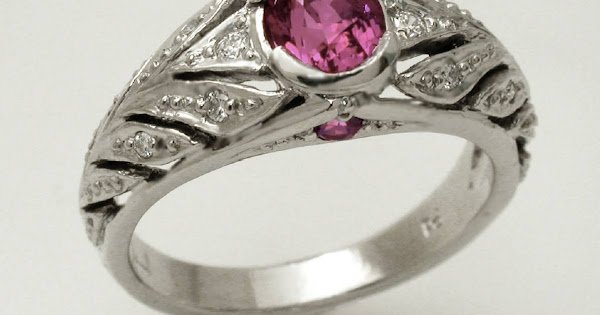I’ve made a few things from Pd which has resulted in a small amount of scrap pieces that are too small to be of direct use. With Pt or Au I just melt it with my oxy/propane torch, but I read that this causes hydrogen embrittlement with Pd. Just how serious is this in practice? Is it usable or what?
I’m not sure what you mean by “Hydrogen embrittlement of Palladium”. When I was working with palladium, I found that bringing palladium close to the melting temperature would cause it to absorb oxygen. It looks very porous and was unusable. I had been told to use a platinum solder with palladium, but this just didn’t work for me. The first time I tried to solder several PD heads together was a disaster and I had to start over. I found that using Hoover and Strong’s 18k hard white worked well for me for most joints that aren’t exposed. It doesn’t work for sizing though, the joint is exposed and will finish differently. So, palladium needs to be fused when sizing, using a small Tig welder, that would saturate the area to be fused with argon gas, keeping oxygen away from the metal. It was my understanding that the Tig welder makes a better joint than a Laser welder.
So from my experience using a oxy/propane torch to melt your scarps, would leave you with an unusable piece of metal.
I’ve successfully used oxy/propane and oxy/hydrogen flames to solder Pd without problem using Pt solder. I’ve just made something from 950Pd but got a measurement wrong, so really need to start over. It weighs about 15gm so if I can’t melt it then it has to be put aside and I have to buy some more Pd, but at £800 (UK) this is not ideal.
I didn’t know about oxygen embrittlement but had read about hydrogen embrittlement.
I think you got this bit wrong. I do not think Oxygen will brittle Palladium nor Silver, but both have a high affinity for Oxygen when in liquid state, which need to escape when the metals solidify.
This means it will have a lot of frozen bubbles if the Oxygen get in contact with the liquid metal.
I have never heard of Hydrogen embrittlement in Pt, but on the other hand it should never get in contact with Carbon when molten, so for Pt it is often recommended to run an Hydrogen torch.
I found a link in here on the same discussion on Pd:
I misspoke, I use 20k white weld for working with Palladium and 18k palladium white gold. The platinum solder I used was, I believe,1500 or1600, which has a flow point of 2700º or 2900º degrees F. The flow point of 950 PD is between 2700º & 2800º, where as the flow point for 20KW is 1615º.
When I started using Palladium it was about $200 an Oz, or £100. It was introduced to the US as an inexpensive alternative to Platinum and nickel white golds by the Platinum Group. I found that to work successfully with it I needed the Tig welder for sizing and melting. Most of the work in Pd that I did was fabrication. Cast pieces were sent to a Platinum caster that had a controlled environment for melting the metal.
Gary you were successful in your working with Pd because your working temperature was low enough that the Pd didn’t absorb the oxygen in the environment.
Casting in Pd

